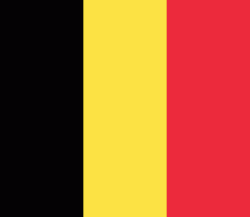Bruges (Brugge)
 |
 |
The area of the whole city amounts to more than 14,099 hectares (140.99 km2; 54.44 sq miles), including 1,075 hectares off the coast, at Zeebrugge (from Brugge aan zee, meaning 'Bruges by the Sea'). The historic city centre is a prominent World Heritage Site of UNESCO. It is oval and about 430 hectares in size. The city's total population is 117,073 (1 January 2008), of whom around 20,000 live in the city centre. The metropolitan area, including the outer commuter zone, covers an area of 616 km² and had a total of 255,844 inhabitants as of 1 January 2008.
Along with a few other canal-based northern cities, such as Amsterdam and St Petersburg, it is sometimes referred to as the Venice of the North. Bruges has significant economic importance, thanks to its port, and was once one of the world's chief commercial cities. Bruges is a major tourism destination within Belgium and is well known as the seat of the College of Europe, a university institute for European studies.
The earliest mention of the location's name is as Bruggas, Brvggas or Brvccia in AD 840–875. Afterwards, it appears as Bruciam and Bruociam (892); as Brutgis uico (late ninth century); as in portu Bruggensi (c. 1010); as Bruggis (1012); as Bricge in the Anglo-Saxon Chronicle (1037); as Brugensis (1046); as Brycge in the Anglo-Saxon Chronicle (1049–1052); as Brugias (1072); as Bruges (1080–1085); as Bruggas (c. 1084); as Brugis (1089); and as Brugge (1116).
The name probably derives from the Old Dutch for 'bridge':. Also compare Middle Dutch brucge, brugge (or brugghe, brigghe, bregghe, brogghe), and modern Dutch bruggehoofd ('bridgehead') and brug ('bridge'). The form brugghe would be a southern Dutch variant. The Dutch word and the English bridge both derive from Proto-Germanic *brugjō-.
Map - Bruges (Brugge)
Map
Country - Belgium
 |
 |
| Flag of Belgium | |
Belgium is a sovereign state and a federal constitutional monarchy with a parliamentary system. Its institutional organization is complex and is structured on both regional and linguistic grounds. It is divided into three highly autonomous regions: the Flemish Region (Flanders) in the north, the Walloon Region (Wallonia) in the south, and the Brussels-Capital Region. Brussels is the smallest and most densely populated region, as well as the richest region in terms of GDP per capita. Belgium is also home to two main linguistic communities: the Flemish Community, which constitutes about 60 percent of the population, and the French Community, which constitutes about 40 percent of the population. A small German-speaking Community, numbering around one percent, exists in the East Cantons. The Brussels-Capital Region is officially bilingual in French and Dutch, although French is the dominant language.
Currency / Language
| ISO | Currency | Symbol | Significant figures |
|---|---|---|---|
| EUR | Euro | € | 2 |
| ISO | Language |
|---|---|
| NL | Dutch language |
| FR | French language |
| DE | German language |















